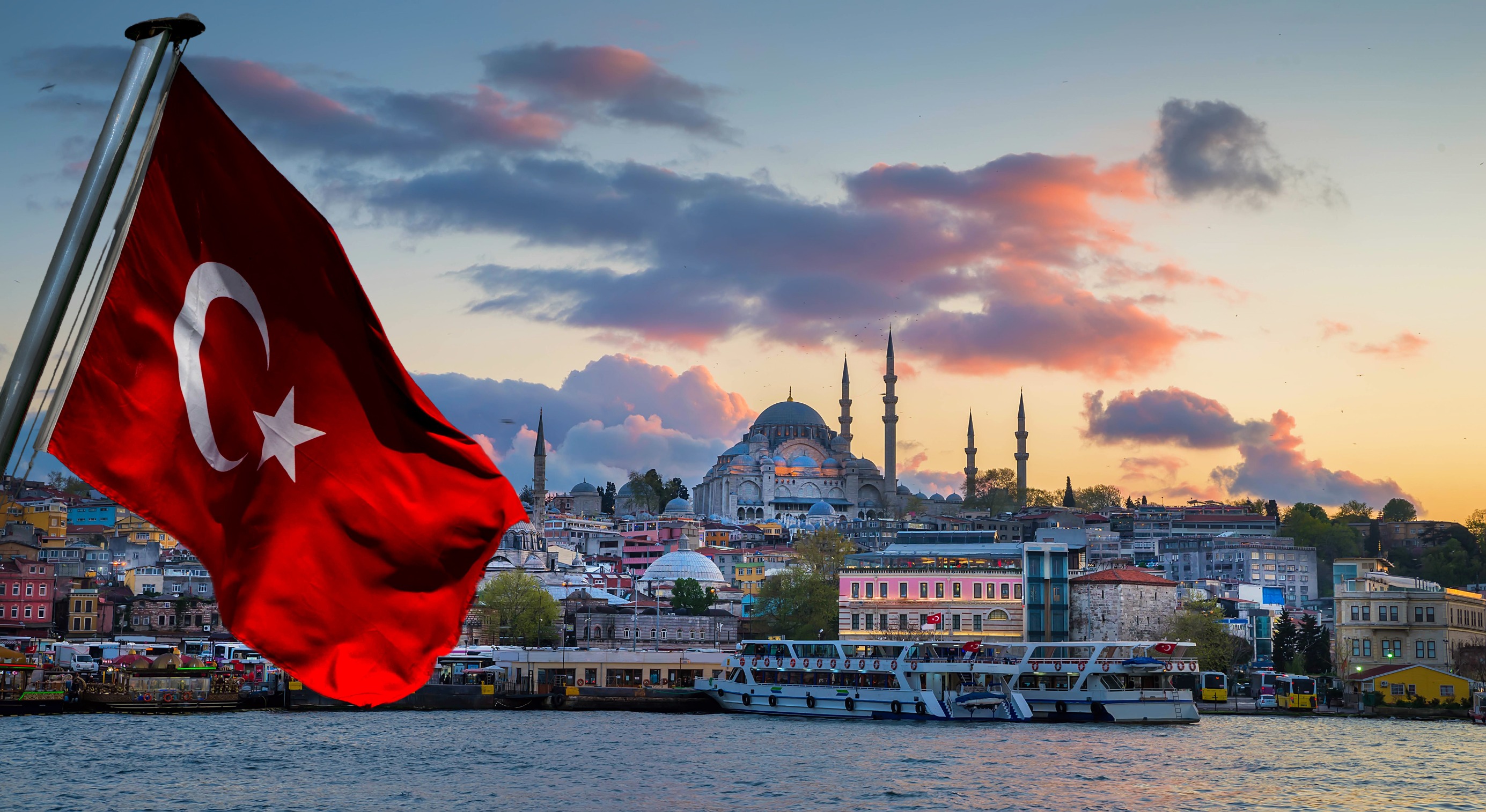Unveiling Turkey's Treasures: A Journey Through Its 7 Geographical Regions

Embark on a captivating journey through Turkey, where ancient whispers echo from weathered stones, turquoise waters caress sun-kissed shores, and diverse landscapes unfurl like a vibrant tapestry. Each of its seven distinct geographical regions presents unique cultural immersions, breathtaking natural spectacles, and delectable culinary delights, promising an unforgettable adventure for every discerning traveller.
Dive deep into Turkey's diverse regions! Uncover cultural wonders, natural beauty, & local secrets in each of its 7 unique areas. Your Turkish adventure awaits!
7 geographical regions of Turkey
Turkey, a country that straddles two continents, is not only a geopolitical bridge between Europe and Asia but also a tapestry of varied landscapes, cultures, and histories. This unique nation is divided into seven distinct geographical regions, each with its character, climate, and cultural heritage. Exploring these regions offers a deeper understanding of Turkey's complexity and the diversity that fuels its vibrant identity.
1. Marmara Region: A Crossroads of Continents and Cultures
straddling the gap between Asia and Europe, the Marmara Region pulsates with the dynamism of Istanbul, a city where historical grandeur seamlessly blends with modern vibrancy. Witness the architectural masterpieces of Hagia Sophia and the Sultan Ahmed Mosque, lose yourself in the labyrinthine alleys of the Grand Bazaar, and embark on a mesmerising cruise along the majestic Bosphorus Strait, the very lifeblood connecting two continents. Beyond the metropolis, delve into Bursa, the former Ottoman capital. It is renowned for its rejuvenating thermal baths, the verdant slopes of Mount Uludağ, and the exquisite Green Mosque, a testament to the region's rich artistic heritage.
- Istanbul: Witness the architectural masterpieces of Hagia Sophia and the Sultan Ahmed Mosque, explore the Grand Bazaar, and cruise the Bosphorus Strait.
- Bursa: Discover the rejuvenating thermal baths, verdant slopes of Mount Uludağ, and the exquisite Green Mosque, remnants of the Ottoman era.
2. Aegean Region: Unveiling the Depths of Antiquity
Immerse yourself in the Aegean Region, where time stands still amidst ancient ruins drenched in the sunset's golden rays. Explore the bustling port city of Izmir, renowned for its vibrant Kordonboyu promenade and the bustling Kemeraltı Market, a veritable treasure trove of local delights. Delve into the depths of antiquity at Ephesus, once a mighty Greco-Roman metropolis, and marvel at the architectural marvels of the Temple of Apollo in Didim and the ancient city of Pergamon. Relax on pristine beaches like Kuşadası, with its turquoise waters and charming atmosphere, and lose yourself in the captivating beauty of olive groves and pine-clad hills cascading towards the Aegean Sea.
- Izmir: Explore the bustling Kordonboyu promenade and the Kemeraltı Market, a treasure trove of local delights.
- Ancient Ruins: Delve into Ephesus, a once-powerful Greco-Roman metropolis, and marvel at the Temple of Apollo in Didim and Pergamon.
- Aegean Coast: Relax on pristine beaches like Kuşadası and soak in the beauty of olive groves and pine-clad hills cascading towards the turquoise waters.
3. Mediterranean Region: Sun-Kissed Shores and Timeless Allure
Unwind on the sun-drenched shores of the Mediterranean Region, where turquoise waters shimmer beneath a cerulean sky. Antalya, the region's vibrant heart, beckons with its historic Old Town, charming harbour, and world-class beaches. Explore Side's meticulously preserved Roman ruins, a testament to the region's enduring legacy, and wander through the picturesque town of Fethiye, a gateway to the breathtaking Oludeniz Blue Lagoon and secluded islands. Savour the freshest seafood amidst stunning vistas, and immerse yourself in the region's rich cultural tapestry woven from diverse influences over millennia.
- Antalya: Unwind on world-class beaches, explore the historic Old Town and charming harbour, and discover Side's meticulously preserved Roman ruins.
- Fethiye: Gateway to the breathtaking Oludeniz Blue Lagoon and secluded islands. Savour the freshest seafood amidst stunning vistas.
- Rich Cultural Tapestry: Immerse yourself in the region's diverse cultural influences woven over millennia.
4. Central Anatolia: A Journey Through Time and Stone
Step onto the vast, moon-like plains of Central Anatolia, where history unfolds in the otherworldly rock formations of Cappadocia. Journey through valleys dotted with iconic fairy chimneys, sculpted into captivating forms by centuries of wind and erosion. Explore the underground labyrinths of ancient civilisations remnants of a bygone era, and discover the serenity of Göreme Open-Air Museum, a UNESCO World Heritage Site where nature and human ingenuity converge. This region, steeped in history and sculpted by natural forces, offers a profound glimpse into the heart of Turkey.
- Cappadocia: Explore valleys dotted with iconic fairy chimneys remnants of ancient civilisations, and discover the serenity of Göreme Open-Air Museum.
- Otherworldly Landscapes: Stand in awe of the vast, moon-like plains and be captivated by the region's unique geological formations.
- A Profound Glimpse: Immerse yourself in history and the captivating interplay between nature and human ingenuity.
5. Black Sea Region: Emerald Embrace and Enduring Traditions
Escape into the verdant embrace of the Black Sea Region, where lush mountains rise majestically from the emerald waters of the Black Sea. Explore the charming coastal towns, like Trabzon and Rize, renowned for producing hazelnuts and tea, staples of the regional cuisine. Embark on invigorating hikes through the Kackar Mountains, a haven for nature enthusiasts, and discover the serene beauty of Uzungöl, a fairytale-like lake nestled amidst breathtaking scenery. Savour the region's unique cuisine, featuring fresh seafood and flavorful dishes influenced by its diverse cultural heritage, offering a window into the soul of the local communities.
- Charming Coastal Towns: Explore Trabzon and Rize, renowned for their hazelnut and tea production, and discover the serene beauty of Uzungöl Lake.
- Kackar Mountains: Embark on invigorating hikes through this haven for nature enthusiasts.
- Unique Cuisine: Savor fresh seafood and flavorful dishes influenced by the region's diverse cultural heritage.
6. Eastern Anatolia: Where Legends Collide with Reality
Embark on an adventure into the rugged terrain of Eastern Anatolia, a land where myths and legends come alive. Stand in awe of Mount Ararat, a biblical landmark shrouded in mystery, and explore the ancient city of Ani, once a significant Silk Road hub, now standing as a haunting testament to a bygone era. Immerse yourself in the rich Kurdish culture, known for its warm hospitality and vibrant traditions passed down through generations. This region, off the beaten path, offers a glimpse into the soul of ancient Turkey, where history whispers from every stone and cultural echo resonate through the ages.
- Mount Ararat: Stand in awe of this biblical landmark shrouded in mystery.
- Ani: Explore the ancient city, once a significant Silk Road hub, now a haunting testament to a bygone era.
- Rich Kurdish Culture: Enjoy the region's warm hospitality and vibrant traditions.
- Off the Beaten Path: Discover the soul of ancient Turkey, where history whispers from every stone.
7. Southeastern Anatolia: A Cradle of Civilizations and Enduring Flavors
Uncover the cradle of civilisations in Southeastern Anatolia, where the Tigris and Euphrates rivers nurture fertile lands and ancient wonders slumber beneath the desert sands. Journey back to Harran, a UNESCO World Heritage Site with its distinctive beehive houses, offering a glimpse into old architectural ingenuity. Marvel at the Göbekli Tepe.
- Harran: Journey back to this UNESCO World Heritage Site with its distinctive beehive houses.
- Göbekli Tepe: Marvel at one of the oldest megalithic structures in the world, predating Stonehenge.
- Tigris and Euphrates Rivers: Explore the fertile lands nurtured by these mighty rivers and uncover ancient wonders slumbering beneath the desert sands.
- Unique Cuisine: Savor dishes influenced by Mesopotamian flavours and fresh local produce.
What is the best way to travel between each region?
Travelling between regions in Turkey can be efficiently managed through air, rail, and road transportation, depending on your time, budget, and preferences:
- Air Travel: For long distances, flying is the quickest option. Turkey's well-connected domestic airlines, such as Turkish Airlines, Pegasus, and AnadoluJet, offer frequent flights between major cities and regions. Istanbul's new airport serves as a significant hub, facilitating easy connections.
- Rail Travel: The Turkish State Railways (TCDD) offers an expanding network of high-speed trains, particularly effective for travel between key cities in the Marmara, Aegean, and Central Anatolia regions, such as Istanbul, Ankara, Eskişehir, and Konya. Traditional trains offer scenic routes to the other areas but are slower.
- Bus Travel: Buses are a popular and extensive mode of transportation, connecting almost all cities and towns across the country. They offer an affordable and flexible way to travel between regions, with services provided by numerous companies featuring comfortable and modern buses.
- Car Rental: Renting a car enables you to explore Turkey at your own pace and is particularly advantageous for visiting remote areas or touring the Mediterranean and Aegean coasts. Roads are generally in good condition, and signage is adequate.
- Ferries: For specific routes, especially in the Aegean and Marmara regions, ferries can be an enjoyable and efficient way to travel, connecting mainland Turkey with its islands and offering routes between the European and Asian sides of Istanbul.
Choosing the best mode of transportation will depend on your specific itinerary, time of year, and personal preferences, with each option offering a unique way to experience Turkey's diverse landscapes and cultures.
Conclusion
Exploring the seven geographical regions of Turkey reveals a country of remarkable diversity, where ancient history and modern life intertwine against a backdrop of spectacular landscapes. From the coastal paradises of the Aegean and Mediterranean to the historical heartlands of Anatolia and the verdant mountains of the Black Sea, Turkey offers an endless array of experiences for travellers and locals alike.
FAQs:
What are the must-see attractions in each region?
Turkey is rich in history, culture, and natural beauty, spread across its diverse regions. Here's a brief overview of must-see attractions in each region:
- Marmara Region: Istanbul, with its historic Sultanahmet district, including the Hagia Sophia, Blue Mosque, and Topkapi Palace. The Bosphorus Strait is also a highlight.
- Aegean Region: Ephesus is one of the best-preserved ancient cities in the world, and Pamukkale is well-known for its hot springs and beautiful travertine terraces.
- Mediterranean Region: Antalya is known for its stunning beaches and the ancient cities of Aspendos and Perge. The Lycian Way offers spectacular coastal walks.
- Central Anatolia: Cappadocia is well known for its distinctive fairy chimneys, cave hotels, and hot air balloon rides. The underground cities of Derinkuyu and Kaymaklı are also fascinating.
- Black Sea Region: Sumela Monastery, perched on the Altındere valley cliffs and the Kackar Mountains' verdant landscapes.
- Eastern Anatolia: Mount Ararat, the legendary resting place of Noah's Ark, and the medieval city of Ani near Kars.
- Southeastern Anatolia: The ancient city of Göbekli Tepe, near Şanlıurfa, considered the world's oldest temple complex, and the stunning Ishak Pasha Palace in Doğubayazıt.
Which region in Turkey is considered the most visited by tourists and why?
The Marmara Region is the most visited, chiefly because it's home to Istanbul, a city that straddles two continents and is rich with historical sites, vibrant markets, and stunning architecture.
What is the best time of year to visit each region?
The best times to visit Turkey's regions are
- Marmara Region (including Istanbul): Spring (April-June) and autumn (September-November) for mild weather.
- Aegean Region: For pleasant temperatures, late spring (May-June) and early autumn (September-October).
- Mediterranean Region: May- June and September- October is ideal for beach weather.
- Central Anatolia (including Cappadocia): Spring (April-June) and autumn (September-November) are for outdoor activities; winter is for snowy landscapes.
- Black Sea Region: Late spring to early summer (May-July) for mild, lush conditions.
- Eastern Anatolia: Summer (June-September) to avoid harsh winters.
- Southeastern Anatolia: Spring (April-June) and autumn (September-November) to dodge extreme heat.
What are the 7 geographical regions of Turkey?
Turkey's seven geographical regions are;
- Marmara Region.
- Aegean Region
- Mediterranean Region
- Central Anatolia Region.
- Black Sea Region
- Eastern Anatolia Region
- Southeastern Anatolia Region
How do the European and Asian parts of Turkey differ regarding geography and culture?
Turkey spans Europe and Asia, offering diverse geographies and cultures. In Europe, Thrace features rolling hills, strategic waterways, and a blend of Mediterranean and temperate climates. It's more urbanised with a rich mix of Ottoman, Byzantine, and modern influences, especially in Istanbul. Asia's Anatolia boasts varied landscapes from mountains to fertile plains, with a climate range from Mediterranean to semi-arid. Its culture is marked by a mix of Greek, Armenian, Kurdish, and Arab influences, with traditional lifestyles and diverse cuisines reflecting its agricultural variety.
To obtain a turkey visa, follow these steps:
 Step1: Fill out the online application form by entering your passport details.
Step1: Fill out the online application form by entering your passport details. Step2: Make an online payment using a credit card.
Step2: Make an online payment using a credit card. Step3: Keep an eye on your email for confirmation of payment and the electronic delivery of your eVisa.
Step3: Keep an eye on your email for confirmation of payment and the electronic delivery of your eVisa.
